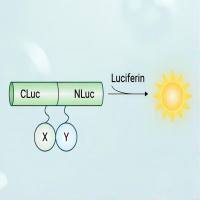Imaging Oscillations of Protein Kinase C Activity in Cells
互联网
717
The protein kinase C (PKC) family contains ten members that share a catalytic core but differ in the composition of their
regulatory modules. The conventional PKCs are a subfamily whose regulatory domains bind to Ca2+
and to the lipid second messenger diacylglycerol and thus they are activated by coincidence detection of Ca2+
and diacylglycerol at the plasma membrane. In HeLa cells, oscillations in Ca2+
evoke oscillations in membrane PKC activity. The only method to date that offers the time resolution to observe these rapid
changes in PKC activity is the utilization of a genetically encoded membrane-targeted PKC activity reporter, MyrPalm-CKAR
(C Kinase Activity Reporter). CKAR is a fluorescence resonance energy transfer (FRET)-based, modular protein that undergoes
a conformational change upon phosphorylation resulting in a change in FRET, thereby serving as a direct readout of cellular
kinase activity. As a genetically encoded reporter, it is easily introduced into cells and can be targeted to distinct intracellular
compartments through the addition of short targeting sequences. MyrPalm-CKAR is targeted to plasma membranes through the amino-terminal
addition of seven amino acids that encode a sequence that is myristoylated and palmitoylated in the cell. This chapter details
the method of utilizing MyrPalm-CKAR to monitor acute changes in PKC signaling at the plasma membrane that are a consequence
of acute changes in Ca2+
levels.









